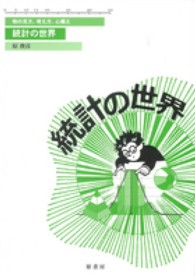- ホーム
- > 洋書
Full Description
We have written this book for sedimentary petrologists and stratigraphers, who routinely encounter fossils as part of their studies but who are not specialists in paleontology, and for students who are seeking a brief review and an introduction to the literature of the petrography of fossiliferous sedimentary rocks.







